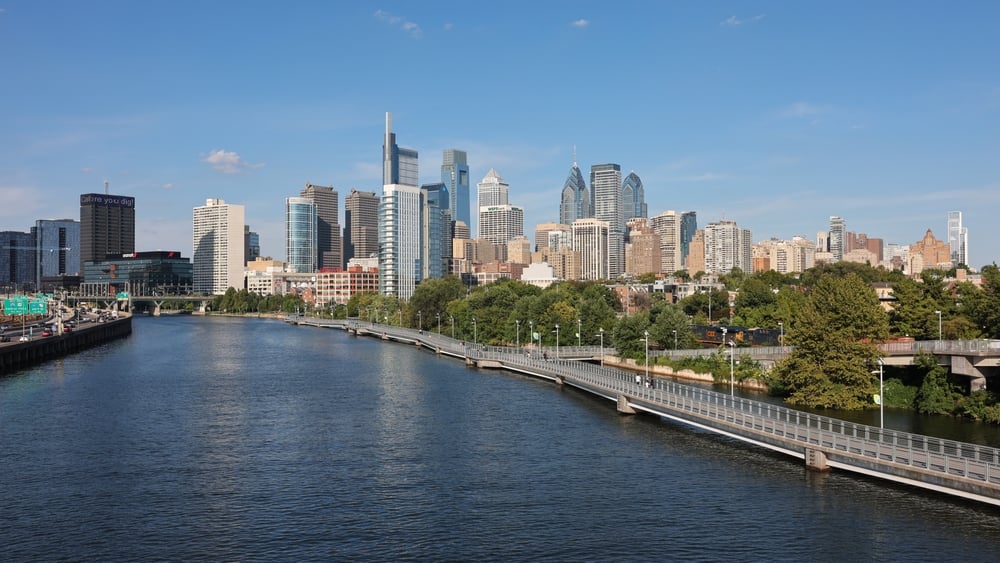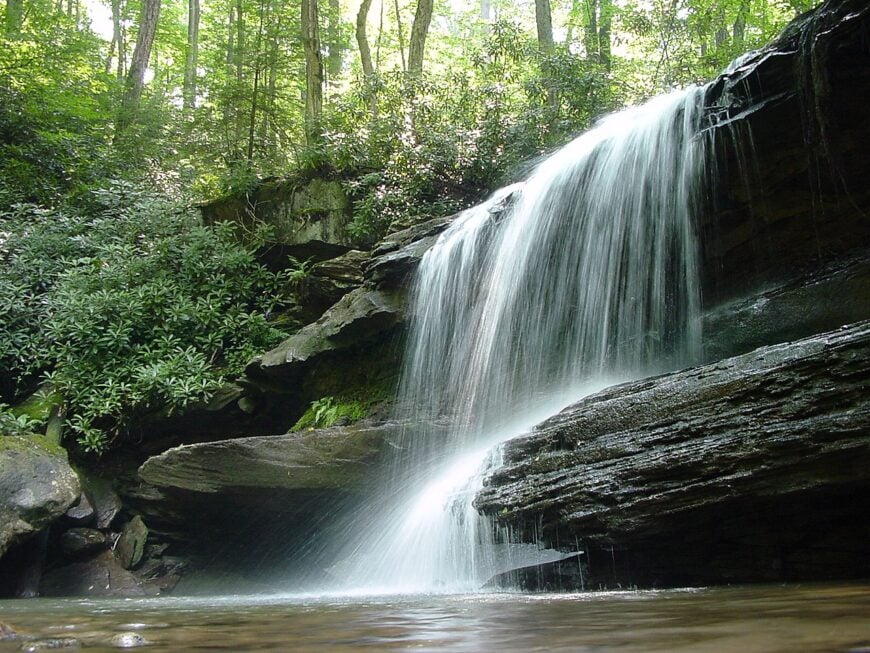
Southwestern Pennsylvania has a way of folding in on itself, the hills rising and curving until the land feels like it’s keeping its secrets. Roads dip through valleys and then vanish into wooded ridges, carrying you past fields, coal patches, and riverside hamlets that seem almost forgotten by time.
This corner of the state doesn’t shout for attention. Instead, its seclusion comes from quiet towns strung along the Monongahela and tucked beneath the Laurel Highlands. They’re places where rivers slow the pace, farm lanes stretch for miles, and church steeples still mark the center of things.
Some were built on coal and river trade, others on farmland and mountain crossings. Their populations may be small, but their character is stubbornly resilient—neighbors who still wave, porches that stay busy on summer evenings, and landscapes that define the rhythm of daily life.
What follows is a tour through 25 of these hidden communities. They’re not tourist brochures but living, breathing places—quiet corners where history, geography, and seclusion have all conspired to create something rare: towns that still feel apart from the modern rush.
25. Greensboro: Riverside Quiet Along the Monongahela

Greensboro, Pennsylvania rests quietly along the Monongahela River, its narrow roads and distance from major highways giving it a tucked-away feel. The town carries a sense of history in its old brick storefronts and fading reminders of its glassmaking past.
Life moves slowly here, marked by gatherings at small diners, fishing along the riverbanks, and quiet walks through rolling hills. Visitors can step into the glass museum, join in seasonal festivals, or simply watch the river drift by as the town hums gently in the background.
Farming and small crafts still provide a modest rhythm of work for those who call it home. It’s the kind of place where the quiet seems endless, reminding you how peaceful the world can be.
Where is Greensboro?

Greensboro, Pennsylvania rests in the far southwest corner of the state, near the West Virginia border in Greene County. It sits about 60 miles south of Pittsburgh, with the quickest route winding along two-lane country roads that branch off from Interstate 79.
Travelers reach it by following quiet highways that narrow into tree-lined stretches before dropping into the Monongahela River valley. It’s close enough to trace on a map, but once you arrive, the world feels hushed and distant, as if you’ve slipped into a place apart
24. Bobtown: Hillside Peace Near Dunkard Creek

Bobtown, Pennsylvania sits tucked in the hills of Greene County, a small coal town that feels hidden from the wider world. Its location near the West Virginia border keeps it far from busy roads, giving it a sense of quiet separation.
The streets tell stories of mining days gone by, when shifts underground shaped both the rhythm of life and the tight-knit bonds of the community. Today, you’ll find locals enjoying fishing spots along Dunkard Creek, exploring wooded trails, or gathering at the ballfields that still draw families together.
The town’s roots in energy and labor remain, even as many now rely on nearby towns for work. Bobtown leaves you with the feeling that some corners of Pennsylvania still hold fast to their own slow and steady heartbeat.
Where is Bobtown?

Bobtown lies tucked into the rolling hills of Greene County in the southwestern tip of Pennsylvania, just a few miles from the West Virginia line. It is roughly 70 miles south of Pittsburgh, reached by following I-79 before slipping onto smaller highways that narrow into backroads.
The approach leads through farm country and coal country alike, where the roads wind steadily downward toward the Monongahela River. By the time you arrive, the noise of the city feels far away, replaced by a quieter rhythm that settles in like a pause from the outside world.
23. Nemacolin: Hidden Village on the Monongahela

Nemacolin, Pennsylvania lies along the Monongahela River, its grid of quiet streets edged by steep hills that keep it feeling apart from the world. Born as a coal town, its history lingers in the modest row houses and the stories passed down through families who worked the mines.
The pace of life is slow here—neighbors know each other by name, and evenings often stretch out on porches overlooking the river’s calm drift. Outdoor lovers find themselves fishing, walking wooded trails, or taking in the hush of the surrounding valleys.
While many residents commute for work now, the roots of industry still echo in the town’s character. It’s a place that holds onto its past while offering the kind of stillness you rarely find anymore.
Where is Nemacolin?

Nemacolin sits at the southern edge of Fayette County, Pennsylvania, close to the border with West Virginia. It’s about 55 miles southeast of Pittsburgh, reached by following I-79 and branching off onto a series of narrower state routes that trace the Monongahela River.
The journey feels more remote with each mile, as the roads bend past forested ridges and small mining towns. By the time you arrive, the river’s steady presence and the tucked-away streets give the sense that life here flows at its own secluded pace.
22. Point Marion: Seclusion Where Two Rivers Meet

Point Marion, Pennsylvania sits at the meeting of the Monongahela and Cheat Rivers, a quiet crossroads where water has always shaped life. Its location at the southern tip of Fayette County makes it feel like the edge of the map, far from highways and city lights.
Once a hub for river trade and industry, the town now leans into simpler rhythms—kayaks gliding across the water, anglers casting lines, and neighbors gathering at the riverside park. History lingers in the old buildings downtown, where faded storefronts whisper of busier days.
Many residents work in nearby towns, but the river remains the steady anchor of community life. It’s the kind of place where the world slows to the pace of flowing water, and you can feel the past and present blending quietly together.
Where is Point Marion?

Point Marion anchors the southern tip of Fayette County, Pennsylvania, where the Monongahela and Cheat Rivers meet just north of the West Virginia border. It sits about 65 miles south of Pittsburgh, with the drive carrying you down I-79 before giving way to winding local highways.
The approach narrows into tree-lined stretches that open suddenly to river views, reminding you how close the water shapes the town. It’s the kind of place where the world feels smaller and slower, a quiet bend in the map that feels removed from everything else.
21. Spraggs: Quiet Crossroads Community

Spraggs, Pennsylvania rests deep in Greene County’s rolling farmland, a place where long country roads and wide fields make it feel far from everything else. With no bustling downtown, the town’s rhythm comes from farm work, church gatherings, and neighbors who still wave as they pass by.
The land itself offers the main attractions—hunting in the woods, fishing in nearby streams, and long drives through quiet valleys that seem unchanged for decades. Old barns and simple homesteads mark its history, reminding visitors that agriculture has always been its backbone.
Life here is unhurried, shaped more by the seasons than by the clock. Spraggs draws you in with its simplicity, the kind that makes you remember how grounding a small, hidden place can be.
Where is Spraggs?

Spraggs rests deep in Greene County in southwestern Pennsylvania, not far from the West Virginia state line. The closest larger hub is Morgantown, West Virginia, about 20 miles south, reached by weaving through country roads that split off from Route 19.
Getting there means passing farmland, wooded ridges, and stretches of open fields where the road seems to drift endlessly. By the time you reach its quiet lanes, the town feels hidden in plain sight—present, yet apart from the world beyond.
20. Jefferson: Small-Town Calm Surrounded by Farmland

Jefferson, Pennsylvania sits quietly in Greene County, its modest streets and surrounding farmland giving it the feel of a town set apart. Unlike busier places nearby, Jefferson carries a steady, small-town rhythm where time seems to stretch a little longer.
History shows itself in the town’s courthouse and the preserved charm of its older buildings, reminders of its role as one of the county’s historic communities. Locals spend their days at community events, enjoying the town park, or venturing out on back roads that wind through fields and wooded hills.
Farming and small businesses remain central, tying the people here to both land and tradition. It’s a place that offers the comfort of constancy, where life flows with a quiet steadiness that’s easy to fall into.
Where is Jefferson?

Jefferson lies in Greene County in the southwestern corner of Pennsylvania, a short drive north of Waynesburg. It’s about 60 miles south of Pittsburgh, with access coming from I-79 before turning onto state routes that thread through farmland and gentle hills.
The approach narrows to two-lane stretches lined with fields and scattered homes, slowing the pace with every mile. By the time you arrive, the town feels like it belongs to another rhythm—close enough to reach, yet quietly apart from the rush of everything else.
19. Marianna: A Historic Borough Tucked Away

Marianna, Pennsylvania is tucked into Greene County’s hills, its sense of seclusion born from winding country roads that keep it far from busy routes. Once built around a thriving coal mine, the town still carries the mark of its industrial past in the layout of its streets and the stories of its families.
Today, the pace is slower—neighbors gather at the park, anglers head to Ten Mile Creek, and quiet evenings settle over rows of modest homes. The history of the 1908 mine disaster lingers as a solemn reminder, woven into the town’s identity with resilience.
Work now often comes from outside communities, but Marianna holds fast to its close-knit spirit. It’s the kind of place where memory and landscape are inseparable, and where silence carries both weight and comfort.
Where is Marianna?

Marianna sits in the northern part of Washington County, Pennsylvania, tucked among hills once shaped by coal mining. It’s roughly 40 miles south of Pittsburgh, reached by way of I-79 before slipping onto smaller state routes that wind through narrow valleys.
The trip carries you past stretches of farmland and remnants of old mining towns, each mile giving the sense of leaving busier places behind. By the time you arrive, Marianna feels sheltered and still, a pocket of history folded into the quiet countryside.
18. Amity: Peaceful Hamlet in Greene County

Amity, Pennsylvania feels like a place suspended in time, tucked among Washington County’s open fields and winding back roads. Its rural setting keeps it quietly apart, where farms stretch across the hills and the hum of tractors often replaces the sound of traffic.
The town’s roots run deep—historic churches and old cemeteries stand as quiet markers of generations that built their lives here. Visitors can wander scenic country lanes, stop at local farm stands, or simply take in the calm views of pastureland dotted with barns.
Agriculture remains the heart of daily life, shaping both the work and the rhythm of the community. Amity leaves you with the sense that simplicity is its greatest strength, a reminder of how steady life can feel when it’s tied to the land.
Where is Amity?

Amity rests in Washington County in southwestern Pennsylvania, surrounded by rolling farmland and gentle ridges. It lies about 50 miles southwest of Pittsburgh, with the route carrying you down I-79 before tapering into winding two-lane roads.
The approach moves at a slower pace, passing barns, fields, and quiet stretches that hint at its rural character. By the time you arrive, Amity feels like a small clearing apart from the world—reachable, yet wrapped in its own calm.
17. Rices Landing: Riverside Stillness with History

Rices Landing, Pennsylvania sits on a bend of the Monongahela River, its secluded feel shaped by steep hills and the slow, winding water that borders it. Once a bustling riverport and coal town, echoes of industry linger in the historic W.A. Young & Sons Foundry, now a preserved site that tells the story of hardworking days gone by.
The riverfront park draws fishermen and families, while kayakers and boaters slip into the current to explore the quiet stretch of water. Seasonal festivals and community gatherings bring life to the small streets, balancing history with moments of celebration.
Though many residents commute elsewhere for work, the town still carries the imprint of its industrial roots. It’s a place where the past feels alive, and the river’s calm presence reminds you why some towns never lose their quiet strength.
Where is Rices Landing?

Rices Landing sits along the Monongahela River in Greene County, Pennsylvania, where history and hills meet the water’s edge. It lies about 55 miles south of Pittsburgh, with the route following I-79 before shifting onto smaller roads that descend toward the river valley.
The drive dips through wooded ridges and farmland, narrowing until the town appears close to the shoreline. When you arrive, the river’s steady flow and the tucked-away streets make it feel like a quiet harbor set apart from the wider world.
16. Mather: Quiet Remains of a Mining Past

Mather, Pennsylvania sits quietly in the hills of Greene County, a small town that seems tucked away from the rush of the modern world. Its story is deeply tied to coal mining, with the memory of the 1928 mine disaster still etched into its identity.
The streets are simple and steady, where neighbors gather on porches and life follows the rhythm of familiar routines. Nature edges the town with rolling fields and wooded trails that invite quiet walks or afternoons of hunting and fishing.
While most work now lies beyond its borders, Mather carries the character of a community built on resilience. It’s the kind of place where history and stillness meet, offering a reminder of endurance in the quiet spaces of Pennsylvania.
Where is Mather?

Mather lies in the heart of Greene County, Pennsylvania, just a few miles northeast of Waynesburg. It sits about 60 miles south of Pittsburgh, reached by I-79 before turning onto a series of country roads that wind through open fields and wooded hills.
The approach feels quieter with every mile, as the traffic thins and the land opens wide around you. By the time you reach Mather, it carries the sense of a place tucked away, where time seems to move at its own measured pace.
15. Carmichaels: Secluded Borough with Historic Roots

Carmichaels, Pennsylvania rests along Greene County’s rolling countryside, its quiet streets framed by farmland that stretches in every direction. Though small, it carries a proud sense of history, best seen each summer during the annual King Coal Show that honors the region’s deep mining roots.
The town’s rhythm is easygoing—families gather at Wana B Park, kids play ball under wide skies, and neighbors still greet one another at the local diner. Scenic drives lead past barns and fields, while nearby trails and streams offer simple escapes into nature.
Farming and small businesses form much of the town’s backbone, keeping daily life close to the land. Carmichaels holds the kind of steady charm that makes you feel rooted, as though the world slows down just enough to let you breathe.
Where is Carmichaels?

Carmichaels rests in eastern Greene County, Pennsylvania, not far from the Monongahela River. It lies about 55 miles south of Pittsburgh, with the route leading down I-79 before narrowing into smaller highways that pass farmland and clusters of woodland.
The drive eases into a slower rhythm as the roads dip and curve through the countryside. By the time you arrive, Carmichaels feels like a quiet pause in the hills, a place both connected and gently removed from the rush beyond.
14. Claysville: Village Charm in Washington County

Claysville, Pennsylvania rests near the western edge of Washington County, a small town whose seclusion comes from the rolling hills and winding country roads that keep it slightly apart from larger routes. Its historic downtown, with brick storefronts and a few timeless businesses, carries the quiet dignity of a community that has seen generations come and go.
Life here centers on local gatherings—Friday night ball games, church suppers, and conversations along Main Street where everyone knows your name. Nearby, open farmland and wooded ridges invite long drives, hunting trips, and slow afternoons outdoors.
Small shops and family-run farms still anchor the town’s economy, giving it a self-sufficient feel. Claysville leaves an impression of warmth and steadiness, the kind of place where time moves gently and predictably.
Where is Claysville?

Claysville lies in western Washington County, Pennsylvania, nestled just a few miles from the West Virginia line. It sits about 35 miles southwest of Pittsburgh, reached most directly by I-70, where the highway gives way to rolling backroads leading into town.
The approach passes farmland, ridgelines, and clusters of old stone and brick buildings that mark its long history. By the time you enter Claysville, it feels like a crossroads where the pace slows, leaving the noise of the highway behind.
13. Prosperity: Small Settlement with Big Quiet

Prosperity, Pennsylvania lives up to its hopeful name in a quiet, understated way, set among Washington County’s rolling farmland and country backroads. Its seclusion comes not from distance but from its size—just a handful of homes, barns, and fields that give it the feel of a place almost hidden in plain sight.
The town breathes a rural rhythm, where mornings begin with the sound of roosters and evenings close with crickets rising from the grass. Visitors pass through to see historic churches, take in scenic drives, or stop at farm stands that line the winding roads.
Farming has always been the backbone here, tying each season to the land in a way that feels timeless. Prosperity leaves you with the sense that sometimes the smallest places carry the truest kind of peace.
Where is Prosperity?

Prosperity is set in the gentle hills of Washington County, Pennsylvania, only a few miles south of Washington borough. It’s about 35 miles southwest of Pittsburgh, reached by leaving I-79 for narrower state routes that wind through farmland and open fields.
The journey slips quickly from suburban edges into a countryside rhythm, where barns and quiet roads guide the way. By the time you arrive, Prosperity feels like a small haven, its calm woven into the landscape around it.
12. East Millsboro: Tucked Away by the Monongahela

East Millsboro, Pennsylvania sits along the Monongahela River, its quiet streets tucked between wooded hills and the steady current that has long shaped life here. The town feels apart from the rush of the world, hidden by back roads that wind past farmland before slipping into its riverside setting.
Its history is rooted in coal and river trade, reminders of which still echo in the buildings and stories passed through families. Today, people spend their time fishing from the banks, launching boats into the water, or gathering at small local spots that carry the town’s character forward.
Work often leads residents to larger towns nearby, but East Millsboro holds its own pace, slower and more familiar. It’s the kind of place where the river’s calm presence makes you feel like time itself has eased.
Where is East Millsboro?

East Millsboro rests in Fayette County, Pennsylvania, close to the banks of the Monongahela River and just north of Brownsville. It’s about 45 miles south of Pittsburgh, with the route following I-70 before narrowing onto smaller highways that dip into the river valley.
The approach winds past wooded slopes and patches of farmland, carrying you steadily away from busier roads. When you arrive, the town feels cradled by the river and hills, a quiet bend where time seems to linger.
11. Fairchance: Seclusion at the Base of the Mountains

Fairchance, Pennsylvania sits near the base of Chestnut Ridge, where the mountains rise up like a natural wall that separates it from the busier valleys beyond. The town’s name comes from an old saying—that settlers who stopped here had a “fair chance” of survival—and that grit still lingers in its character.
Quiet streets lead to small shops and diners, while the hills offer hiking trails, hunting grounds, and winding roads that seem to disappear into the forest. History shows itself in old coal patches and the echoes of industry that once anchored the community.
Many residents now commute to nearby Uniontown or Morgantown, yet Fairchance maintains its own strong sense of identity. It’s a place where the mountains hold you close, reminding you that some towns are defined as much by their setting as their spirit.
Where is Fairchance?

Fairchance sits in southern Fayette County, Pennsylvania, right at the base of Chestnut Ridge near the West Virginia border. It lies about 55 miles southeast of Pittsburgh, reached by taking I-79 and then turning onto Route 43 before smaller roads carry you into town.
The drive gradually shifts from open highways to winding stretches framed by ridges and scattered farmsteads. By the time you arrive, Fairchance feels like a gateway tucked between mountains and valleys, close to everything yet softened by its quiet setting.
10. Chalk Hill: Gateway to Secluded Mountain Bliss
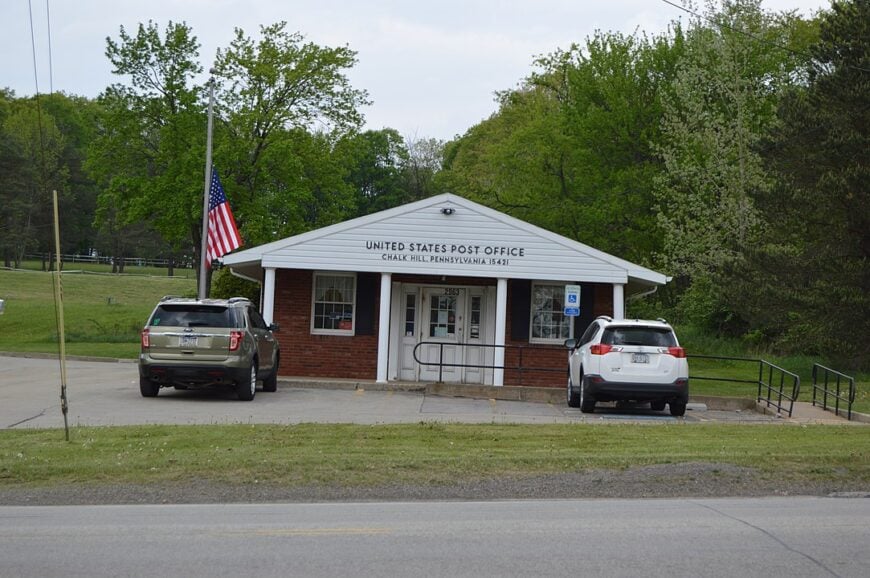
Chalk Hill is a tiny community tucked in the Laurel Highlands of Fayette County, with a population that barely reaches triple digits. Its setting near the ridges gives it a natural sense of seclusion, where wooded slopes and winding backroads create the feeling of being far removed from larger towns.
The village is best known as a gateway to Fort Necessity National Battlefield, where George Washington’s early military career left its mark on the landscape. Outdoor enthusiasts use Chalk Hill as a base for hiking, fishing, and exploring the mountain trails that cut across this part of the Highlands. Local inns and roadside diners provide a touch of hospitality, serving as welcome stops in an otherwise quiet countryside.
What makes Chalk Hill feel so secluded is the absence of heavy development and the dominance of forested land all around it. Sparse housing, mountain air, and the calm of backcountry roads combine to give the place a hushed quality that’s rare so close to a national highway. It’s a small settlement, but one that wears its remoteness like a badge.
Where is Chalk Hill?
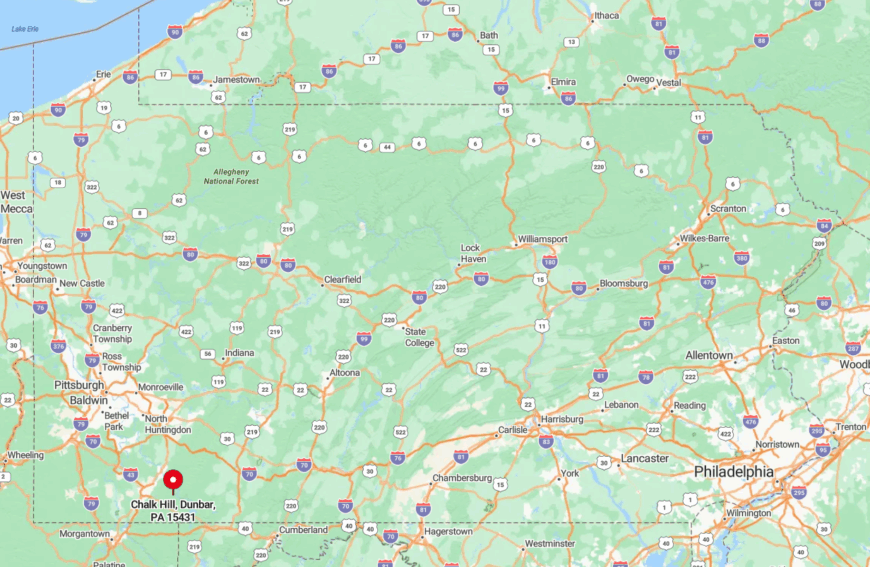
Chalk Hill is nestled in the Laurel Highlands, just off U.S. Route 40, also known as the National Road. Its location near the mountains provides a natural barrier from the bustling cities, enhancing its secluded feel.
The town is surrounded by lush forests and rolling hills, which not only offer stunning scenery but also keep it tucked away from major highways. Getting there is a delight in itself; I usually take a scenic drive through the countryside, enjoying the quiet roads that wind their way into this peaceful corner of Pennsylvania.
9. New Freeport: Last Stop Before the Border
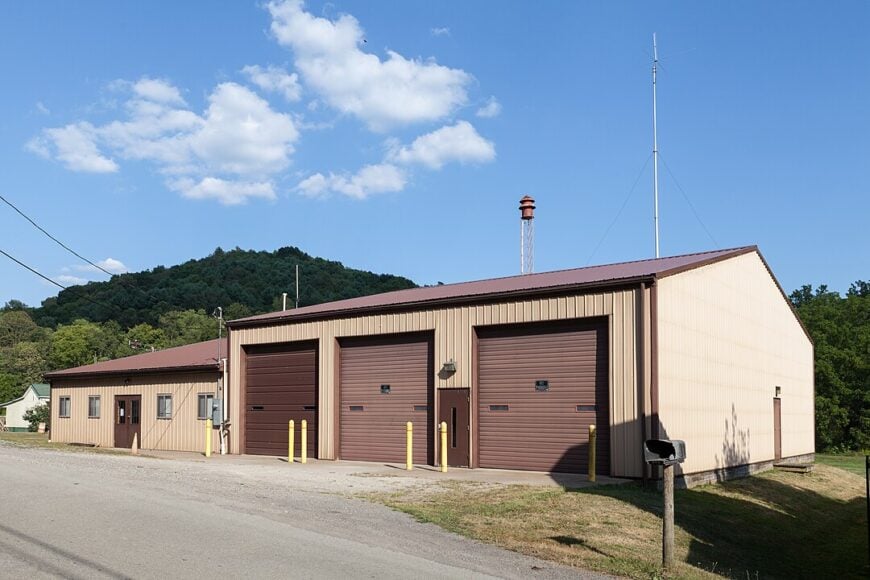
New Freeport is a tiny unincorporated community with a population of just a few hundred, making it one of the most peaceful places I’ve visited. Located at the edge of Greene County, it’s the last stop before crossing into West Virginia.
Despite its size, there’s a certain charm to this town, with its rolling farmlands and historic buildings. The main industries here revolve around agriculture and small family-owned businesses.
What I find most appealing is the predominance of undeveloped land, which provides a secluded escape from the hustle and bustle of larger towns. It’s the perfect spot for those who appreciate wide-open spaces and a slower pace of life.
Where is New Freeport?
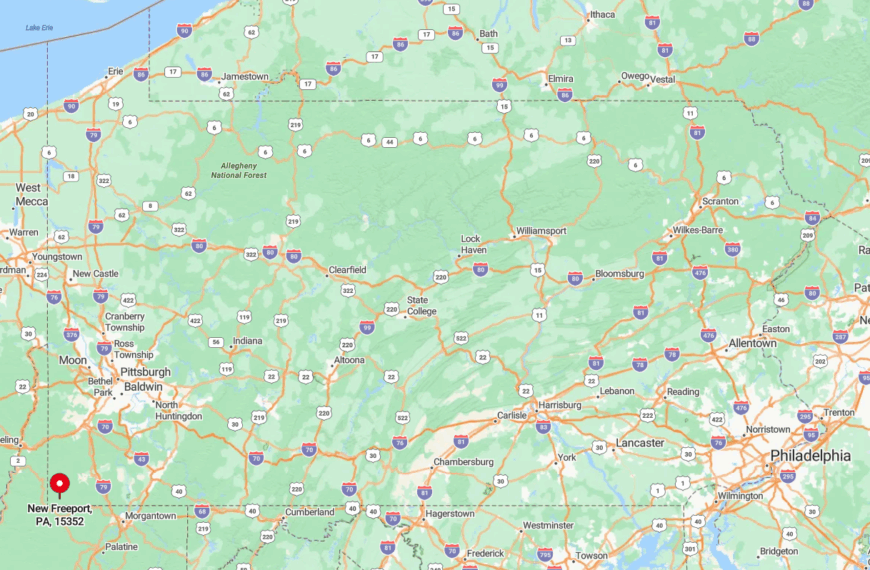
Situated in the southwestern corner of Pennsylvania, New Freeport is nestled right against the West Virginia border. Its remote location is accentuated by the surrounding hills and forests, which create a natural buffer from nearby urban areas.
The town isn’t accessible via major highways, which adds to its sense of isolation. To get there, I usually take the winding back roads through Greene County, enjoying the serene countryside that eventually leads me into this peaceful enclave.
8. Dilliner: Riverside Solitude

Dilliner is a small community along the banks of the Monongahela River, with a population of around 700 people. I often visit for the tranquil river views and the opportunity to engage in activities like fishing and kayaking.
The town doesn’t have much in terms of industry, which adds to its peaceful atmosphere. Large lot sizes and the natural barriers formed by the river and surrounding woodlands offer residents a great deal of privacy.
What makes Dilliner secluded is not just its size but also the way the landscape naturally insulates it from the outside world. It’s a place where you can sit by the river and feel completely at ease.
Where is Dilliner?
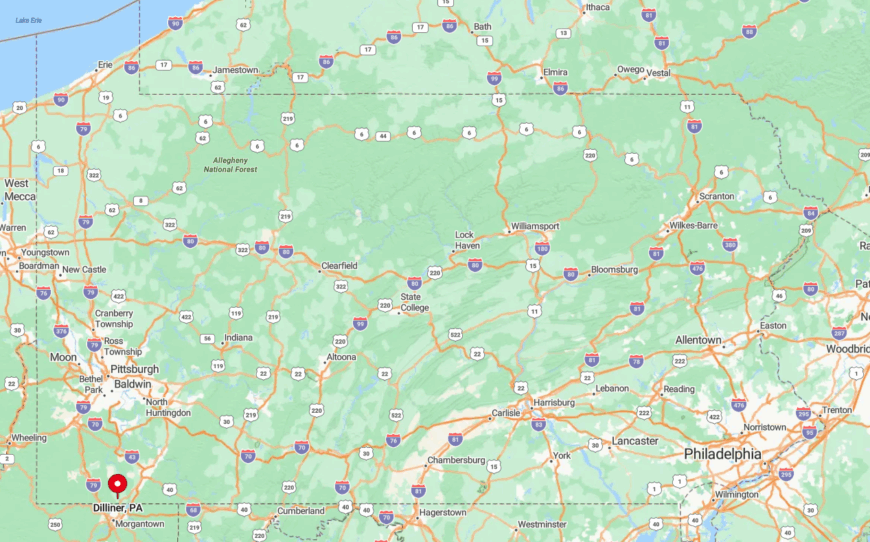
Dilliner is located in Greene County, close to the West Virginia border, nestled along the Monongahela River. The town’s riverside location and the dense forests surrounding it contribute to its secluded nature.
It’s off the beaten path, with access mainly via local roads rather than major highways. When I travel to Dilliner, I enjoy the scenic drive through the countryside, crossing over gentle hills and past sprawling farms before reaching this riverside haven.
7. Wind Ridge: Quiet Countryside Living
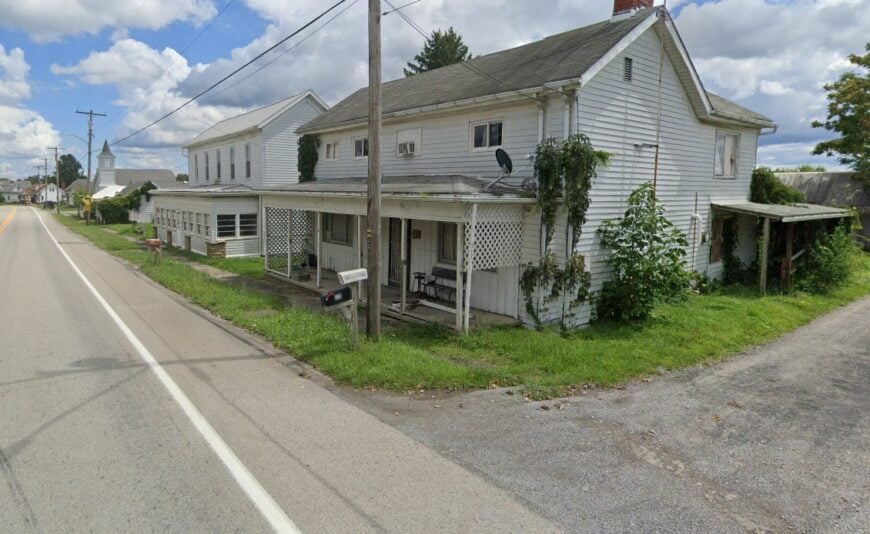
Wind Ridge is a quaint village with a population hovering around 200, offering expansive rural landscapes that I find incredibly soothing. The minimal development here means that the countryside remains largely untouched, perfect for long walks and enjoying nature.
There aren’t any major industries—it’s mainly agricultural, with local farms dotting the rolling hills. The town’s distance from urban centers and lack of commercial activity make it a tranquil spot for those desiring secluded living. Every time I visit, I feel a world away from the stresses of city life.
Where is Wind Ridge?
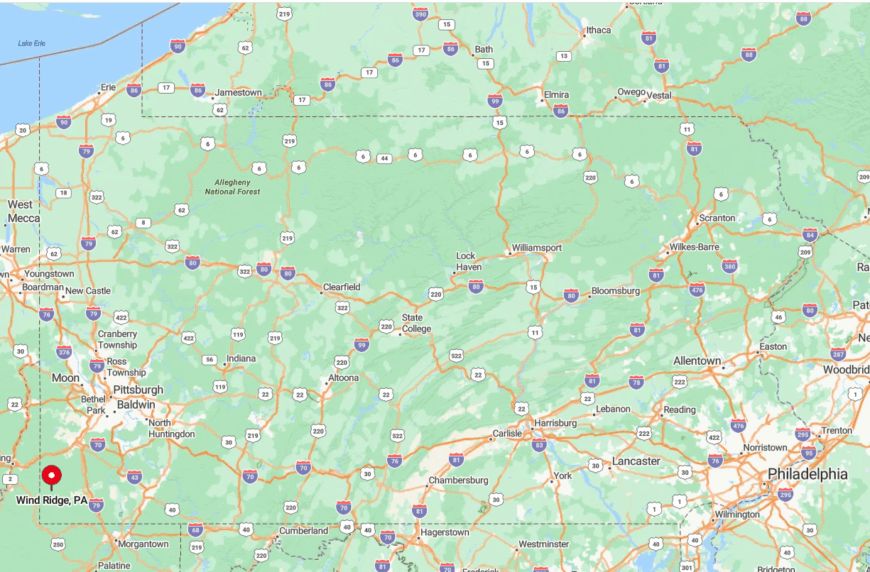
Located in western Greene County, Wind Ridge sits close to the West Virginia border. Its isolation is due in part to its distance from major highways and the surrounding rural landscapes.
The town is accessible primarily through winding country roads, which I find add to its charm. Getting there involves a leisurely drive through pastoral settings, which sets the tone for a relaxing visit to this peaceful countryside community.
6. Rogersville: Serenity Amongst the Hills
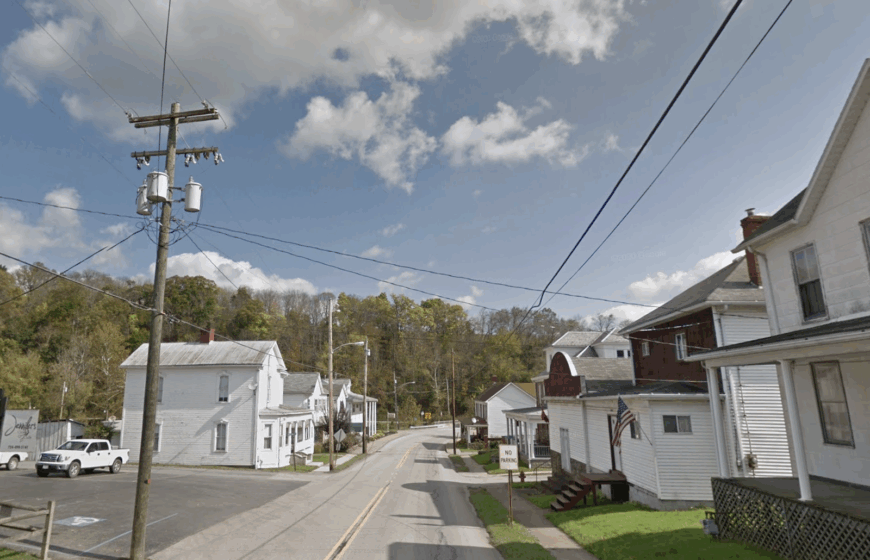
Rogersville is a small, unincorporated community with a population of just over 200 people. I appreciate its low housing density and the hilly terrains that envelop the town, contributing to its secluded nature.
Outdoor activities include hiking and exploring local historical sites like the Rogersville Methodist Church, which dates back to the 19th century.
There isn’t much industry here, which means less traffic and noise—just the serenity of the hills. The peaceful environment away from high-traffic zones makes Rogersville a haven for those seeking a quiet lifestyle.
Where is Rogersville?
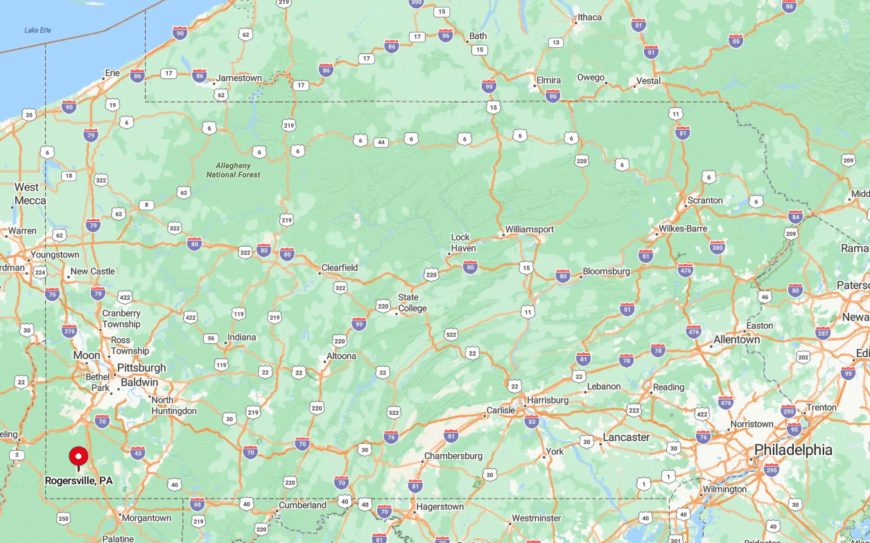
Situated in Greene County, Rogersville lies between Waynesburg and the Pennsylvania-West Virginia border. The town’s seclusion is enhanced by the surrounding hills and valleys that create a natural barrier from more populated areas.
Access is primarily through state routes that wind through the countryside. I enjoy the drive into Rogersville, as the scenic routes offer a glimpse into the tranquil life that awaits in this tucked-away community.
5. Graysville: Rural Refuge in Greene County
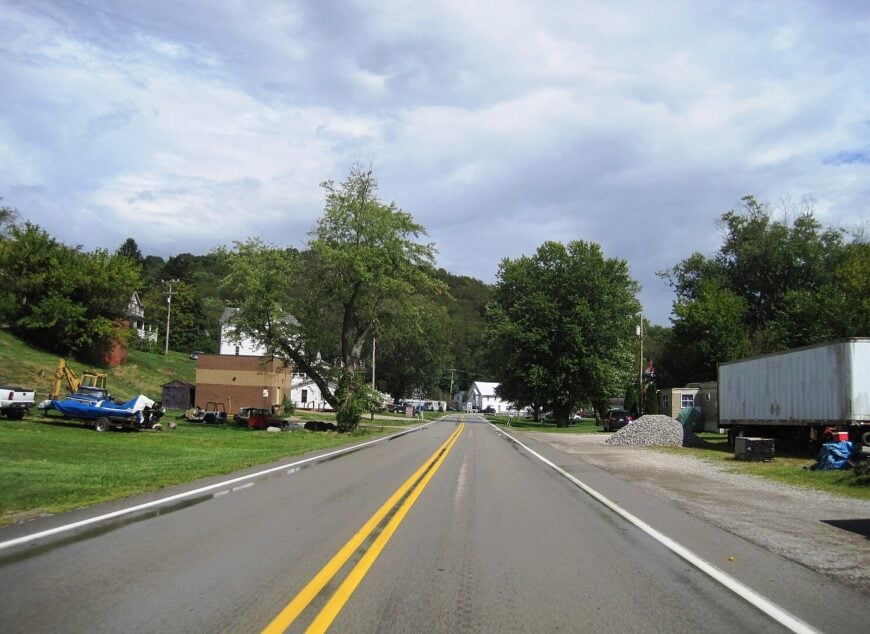
Graysville is a tiny unincorporated area with a population of less than 300, characterized by large acreage properties that I’ve always found appealing. The natural landscapes here serve as barriers from the outside world, offering a perfect setting for privacy seekers.
The town doesn’t have any significant industries, which keeps traffic to a minimum and the environment peaceful.
I enjoy exploring the nearby Ryerson Station State Park, a hidden gem for hiking and wildlife watching. Graysville’s seclusion comes from its expansive rural surroundings and the sense that time moves just a bit slower here.
Where is Graysville?
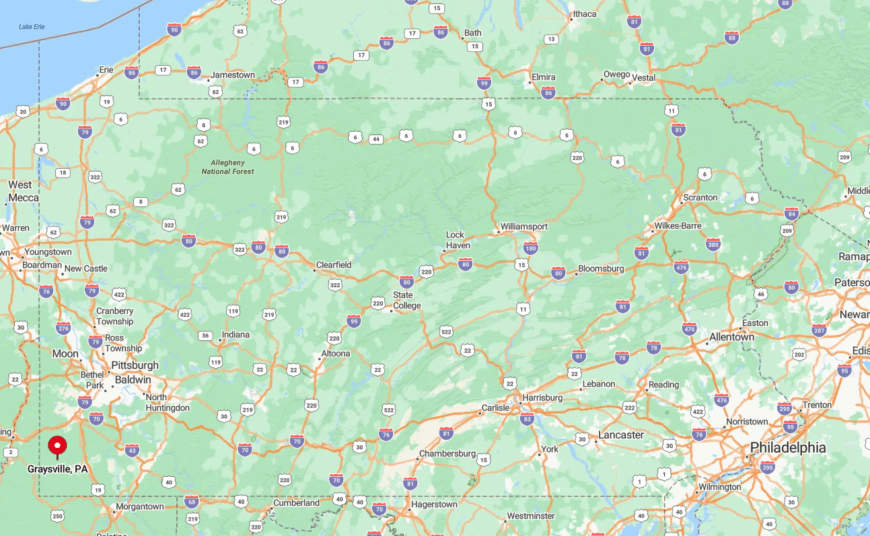
Located in northeastern Greene County, Graysville is tucked away amidst rolling hills and farmland. Its remote location, away from major highways, enhances its secluded atmosphere.
Access is mainly via local roads that wind through picturesque landscapes. When I head to Graysville, the journey itself feels like a retreat, taking me deeper into the heart of Pennsylvania’s peaceful countryside.
4. Markleysburg: Mountain Peace Near the State Line
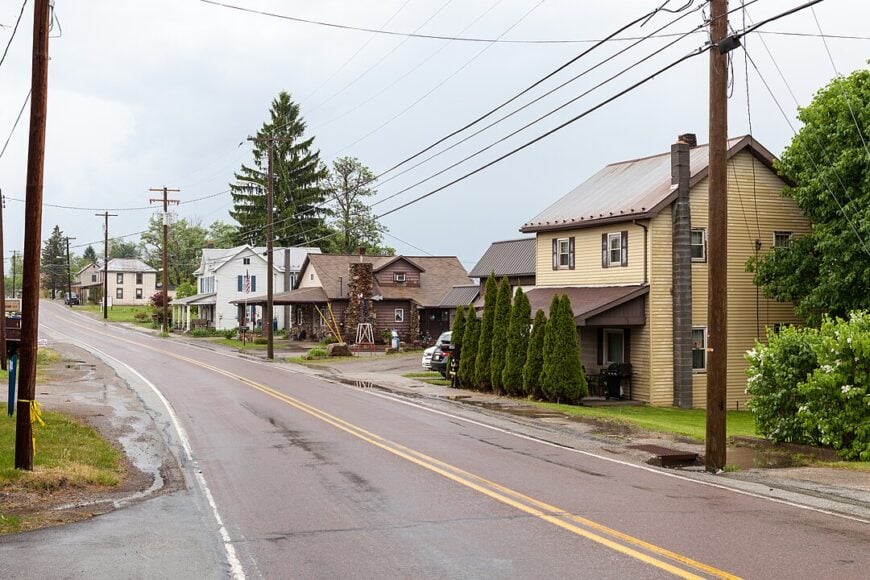
Markleysburg is a small borough with a population of around 250, situated in the mountains of Fayette County. I appreciate its sparse population and the ample undeveloped land that offers a quiet lifestyle removed from commercial areas.
The town provides easy access to outdoor activities like hiking and skiing at nearby resorts such as Nemacolin Woodlands Resort. There isn’t much industry here; the economy is largely supported by tourism and small businesses.
Markleysburg’s secluded nature is enhanced by its mountainous terrain and the natural beauty that surrounds it, making it a perfect getaway spot.
Where is Markleysburg?
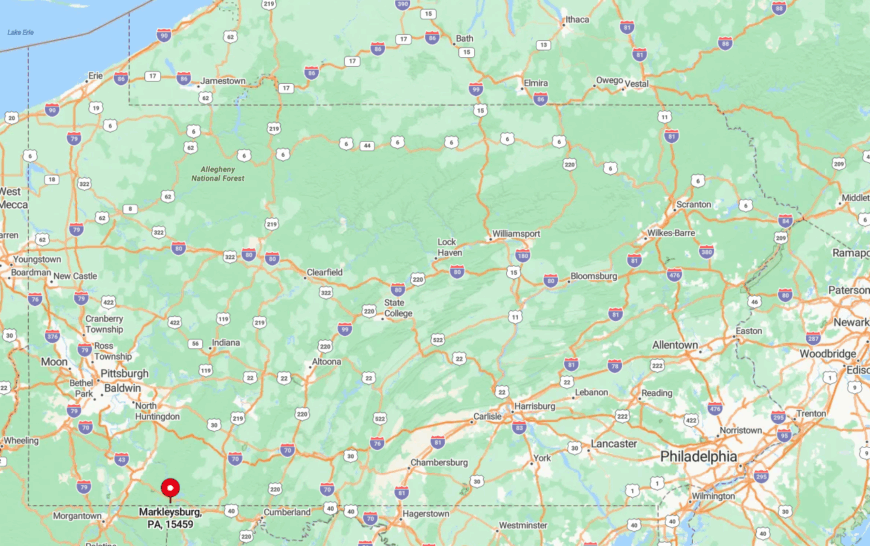
Nestled near the Maryland border, Markleysburg is located along Route 40 in Fayette County. Its position in the mountains provides natural seclusion from larger urban areas.
The town is enveloped by forests and high elevations that keep it tucked away. I usually take the scenic National Road to get there, enjoying the breathtaking views as the road winds through the mountains and into this peaceful borough.
3. Gibbon Glade: Forest Enclave in Fayette County
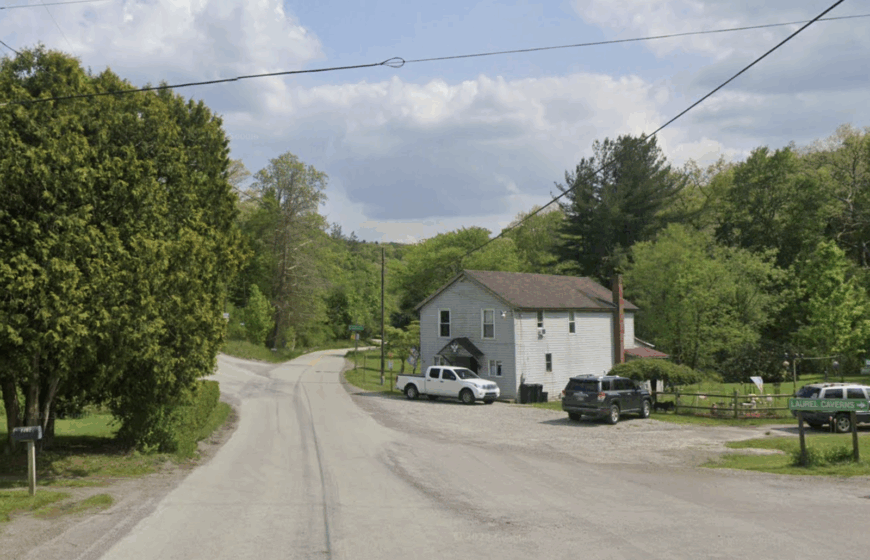
Gibbon Glade is an unincorporated community with a population that’s less than 200, making it one of the most secluded spots I’ve come across. It’s surrounded by dense forests, offering expansive lot sizes that are ideal for those seeking solitude in a natural setting.
Outdoor enthusiasts like me can enjoy hiking, hunting, and exploring the rich woodland areas. There’s virtually no industry here, which keeps the area pristine and free from noise pollution. The seclusion comes from the vast stretches of forest that act as natural barriers, providing a peaceful retreat far from city life.
Where is Gibbon Glade?
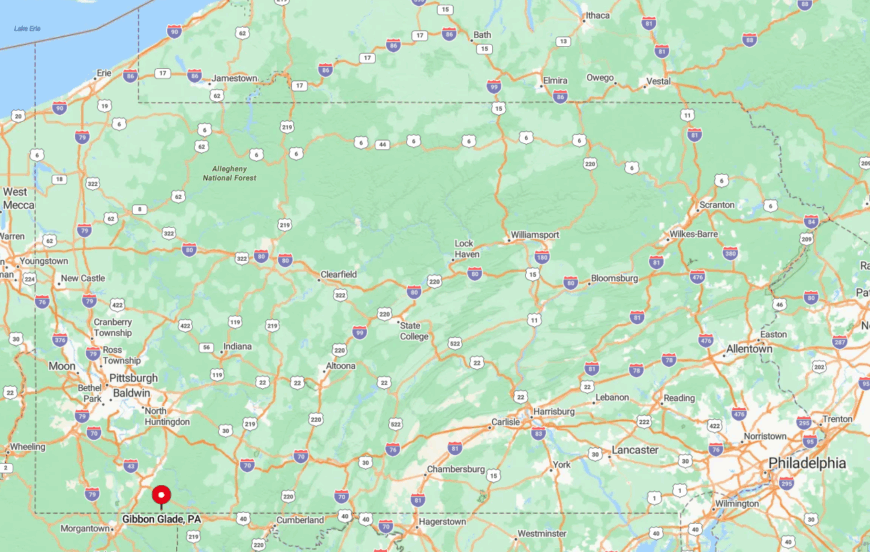
Located in southern Fayette County near the West Virginia border, Gibbon Glade is nestled amidst the Appalachian Mountains. Its remote location is accentuated by the surrounding state forests and parks.
Accessing the town involves driving through winding mountain roads, which I find both exciting and calming. The journey through the dense forests adds to the feeling of entering a secluded enclave where nature takes center stage.
2. Brave: Hidden Gem on the West Virginia Border
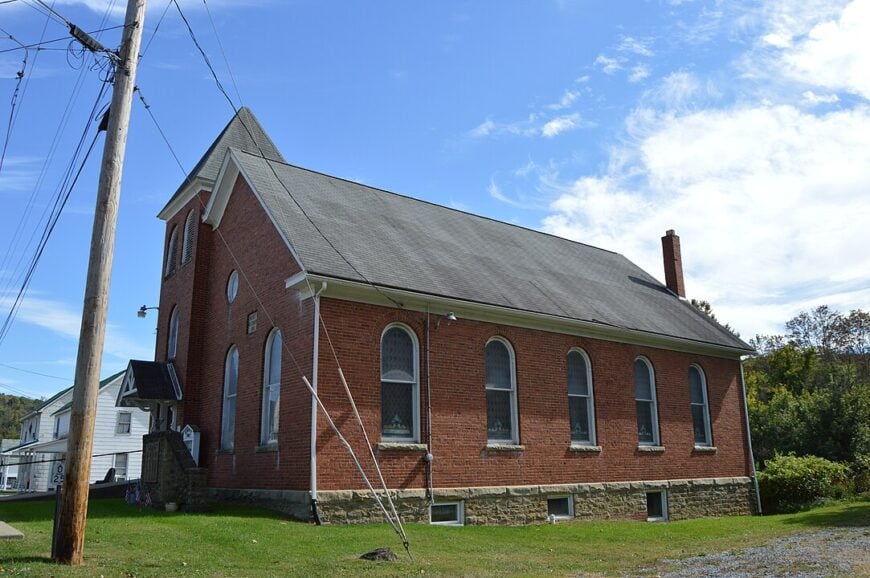
Brave is a small community in Greene County with a population of just over 200 people. I find its rural charm irresistible, with rolling hills providing a serene atmosphere that’s hard to match. The main industries here are limited to small-scale agriculture and local businesses.
One of my favorite activities is visiting Dunkard Creek, a peaceful spot perfect for fishing and picnicking. The town’s low population density and surrounding landscapes offer a level of privacy and tranquility that makes Brave a true hidden gem.
Where is Brave?

Situated right on the West Virginia border, Brave is at the western edge of Pennsylvania. Its seclusion is enhanced by its position among the rolling hills and its distance from major roadways.
To get there, I navigate a series of local roads that meander through the countryside, further emphasizing the town’s hidden nature. The absence of heavy traffic and commercial noise makes the journey to Brave feel like stepping back in time to a simpler, quieter era.
1. Confluence: Where Three Rivers Meld into Tranquility
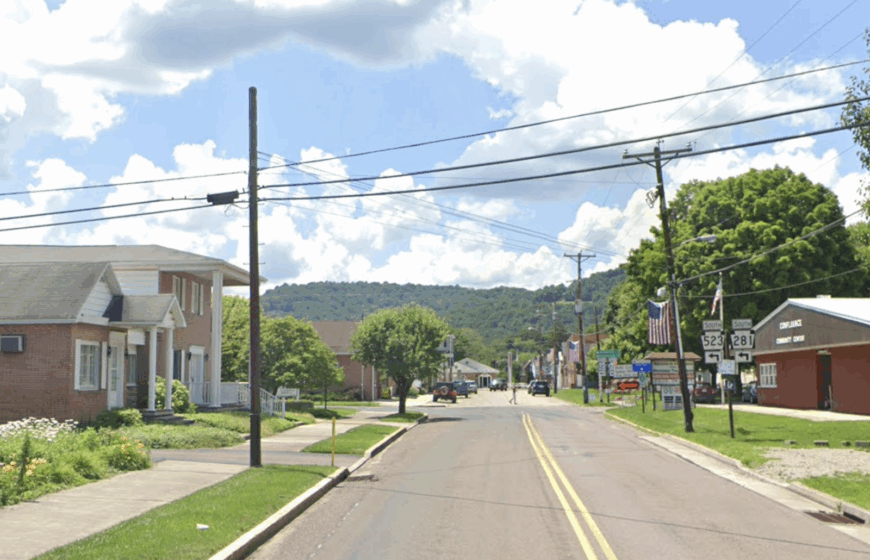
Confluence is a charming borough with a population of around 750, located at the junction where the Casselman River, Laurel Hill Creek, and the Youghiogheny River meet. I love how this town offers sizable lots and natural barriers that create a secluded haven away from urban hustle.
Outdoor activities abound, from boating and fishing to biking along the Great Allegheny Passage trail. The town’s main industries revolve around tourism and recreation, capitalizing on its unique position among the rivers.
The convergence of these waterways and the surrounding natural landscapes make Confluence feel like a peaceful oasis—a perfect spot for those wanting to immerse themselves in nature’s tranquility.
Where is Confluence?
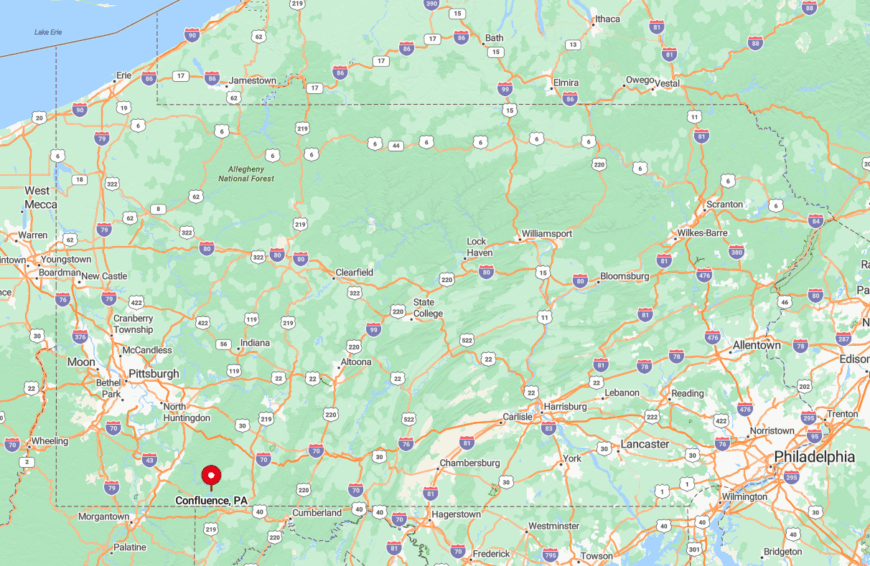
Confluence is located in Somerset County, nestled in the Laurel Highlands of southwestern Pennsylvania. Its position at the meeting point of three rivers provides both scenic beauty and a sense of seclusion.
The town is surrounded by forested hills and state parks, which act as natural barriers from larger cities. I usually reach Confluence via Route 281, enjoying the scenic drive through the mountains that leads into this riverside retreat. The journey, much like the town itself, is a refreshing escape from the demands of daily life.

